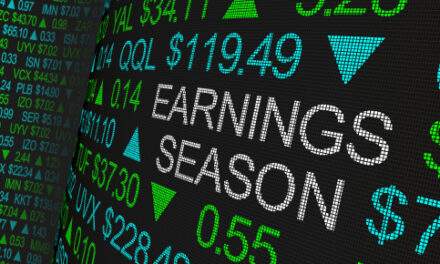Seasonality is a well-known trading tool. It essentially shows you how a stock has performed in the past, and assumes that it will continue to perform that way during certain times each year.Like other popular indicators, traders tend to use a standard, oversimplified approach to trading it.The standard way to calculate seasonality is to average the log values of returns for every trading day of the year. While the math might sound a little daunting, it can be set up as a simple spreadsheet.Of course, traders don’t generally look at spreadsheets. The seasonal average is usually just added to a chart to show the indicator, and that’s that.But this isn’t really an effective way to incorporate seasonality into a trading strategy.To really get the most out of these indicators, you have to dive deep and understand how they work. And today, I’ll share how one of my colleagues dove deep on seasonality and turned it into a strategy that is far more reliable and profitable.
One of the unique features regarding seasonality is the fact that it is projected into the future.An example of this is the blue line in the chart of Tesla (TSLA) below.

(Click here to view larger image.)
The fact that the seasonal trend is bearish doesn’t necessarily mean that TSLA will decline over the next few weeks.But with the recent weakness, what we see ahead is a worrisome indicator for TSLA bulls.It’s also important to note that the indicator is only showing the direction of the historic trend over that time.That’s the thing: Seasonal indicators can’t be used to develop price targets. The limited information available from the indicator is one reason traders generally use seasonal lines like the one shown above as just one input in their trading strategy.I added a simple supplemental analysis to the bottom of the chart. The bars show the percentage of time the stock rises or falls in a given week.For this chart, I centered the bars around 50 and made bars with values less than 50% red. Red bars indicate the stock falls more often than it rises in that week. That gives the signal a bit more nuance — we can surmise how far TSLA might fall in the bearish seasonal period.This analysis can be applied to any stock. Like most technical indicators, traders tend to look at the chart for the signal and rarely dig deeper.But Chad Shoop isn’t like other traders.
Chad Shoop Knows Seasonality
Chad digs deep into how indicators work. His research allows him to understand why the simple seasonality indicator doesn’t work, and what must be done to make it work.That’s because Chad spends a lot of time researching ideas that don’t work. That’s valuable information, but it’s not profitable information.Profits come from the rare times where Chad is able to discover an indicator that works consistently, and tweaks it to suit his needs.His Profit Radar is a strong recent example. By tuning the Relative Rotation Graph to his standards, Chad was able to find the fastest-moving stock, in the fastest-moving sector, at any given time.And just recently, he’s done it again with seasonality.You see, Chad’s been researching seasonality for years. He’s made some nice profits with that idea. But he’s really never done with his research.He’s always looking at new ideas, and recently he discovered a truly valuable insight on seasonals.In short, Chad has discovered that certain stocks produce valuable signals after key events multiple times a year. When these signals flash, Chad gains a high degree of confidence that a stock is about to begin a strong bullish trend.So while most traders are obsessed with the event itself, which has low odds of showing returns, Chad’s approach is so effective it’s almost scientific.With every alert he sends with this strategy, he can even tell you the percentage chance of the trade working out. That’s a level of precision you rarely see.He calls it the Profit Calendar. And with it, he’s beaten the S&P 500 3-to-1 since he introduced it to his readers. He’s handed out over 53 triple-digit winners.And really, he’s just getting started.If you want to start using an indicator that wasn’t just slapped on a chart with standard data, you need to see what Chad’s been doing with the Profit Calendar.I’m confident that after you see it, you’ll never trade the same way again.Regards, Michael Carr, CMT, CFTeEditor, One Trade
Michael Carr, CMT, CFTeEditor, One Trade
Chart of the Day:Déjà vu Triangles?

(Click here to view larger image.)
Speaking of TSLA, let’s take a look at it from a different angle.In this chart, we’re zooming out and seeing if we can take any clues from the past. On a purely speculative, market structure perspective, the TSLA chart looks a bit similar to its last major bubble phase in early 2021.We saw a choppy base form, lead to a massive run up, and then a bit of bouncing around in the triangle.After that, TSLA broke down through the triangle and eventually settled into another choppy, rising base.That led to another major bubble phase, with the stock coming off those highs and chopping around in another triangle structure.So, let’s just pretend that history will repeat itself. What can we expect for TSLA?Well, it would mean we’re going to break down from this triangle, TSLA’s price action will get boring for a while, and in another year or so we should see yet another parabolic run up.Is that what will happen? I have absolutely no idea. But if TSLA continues to operate on these major hype cycles, we can expect to wait a long time for any new highs in the stock price.If you’ve never bought TSLA, I wouldn’t suggest doing that here. It likely has one more big flush down before we start to settle into another bottoming structure.Regards, Mike MersonManaging Editor, True Options Masters
Mike MersonManaging Editor, True Options Masters




